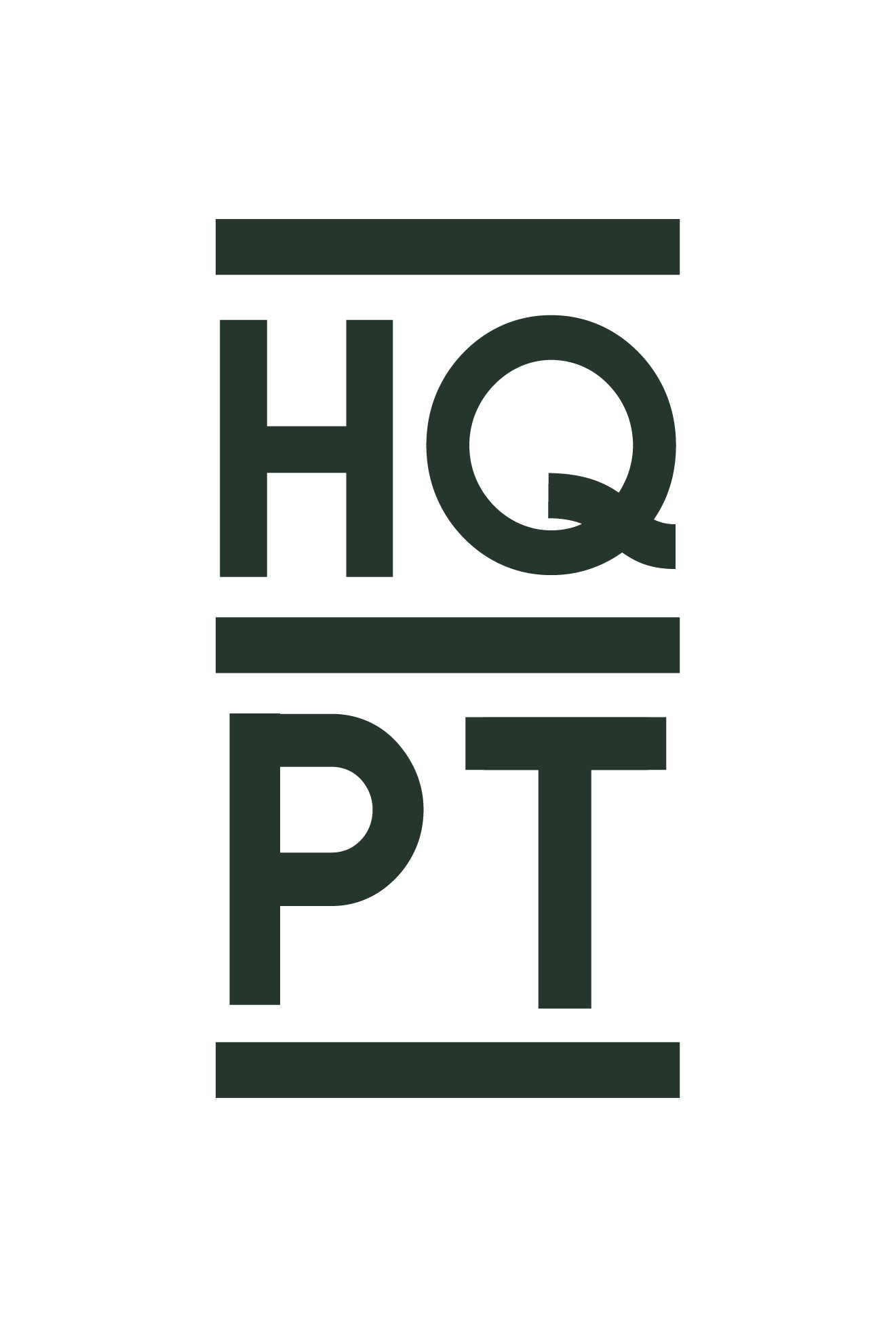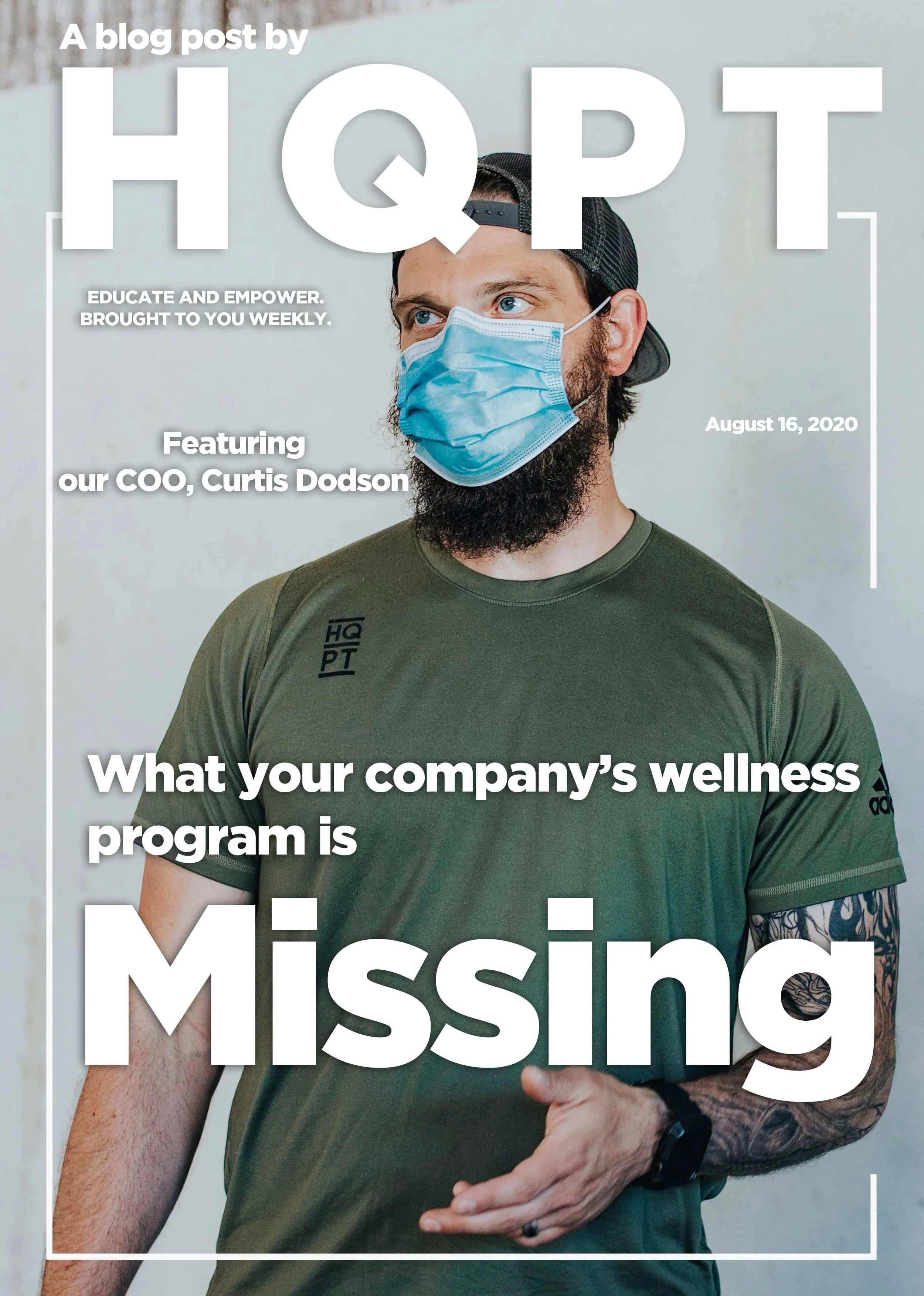What Your Company's Wellness Program Is Missing
This week’s blog is written by Curtis Dodson, PT, DPT, CSCS. Curtis is HQ PT’s COO and a key member of our corporate wellness team, delivering high quality content in all the aspects that make up the best corporate wellness program available.
A wellness program for your organization is the best way to invest in the health and wellbeing of your employees. Especially in today’s current climate, maintaining a workforce that is happy, healthy, and productive is of the utmost importance for any business. The problem, however, is that not all wellness programs are created equal. Maybe you have implemented a wellness program in the past that didn’t show much benefit, or perhaps you are a business owner ready to offer wellness services for the first time. Wherever you fall on this spectrum, let us highlight some key elements of a successful wellness program that most programs out there today fail to include.
Personal Connection
Understanding the individuals that make up your workforce will help drive the kinds of services you want to implement. Make sure to take into account the expectations of your employees so that each person feels the program can benefit them in some way. The barrier to entry cannot be so high to engage with the services that you hinder a large percentage of your employee participation. It is essential that your wellness program meets your employees where they are at while providing them with help that is meaningful to them on an individual level. Using this principle as your starting point ensures your program will be unique and not a “plug-in-play” cookie cutter program. Instead, it will be one that fosters collaboration, engagement, and positive cultural change across your organization.
Accessibility
The program needs to be robust enough to cater to everyone and their specific needs. Inclusivity is key, and everyone deserves the right to have access to the best and most scientifically up to date health and wellness information. Whether an employee is in the office, working from home, on a job site, or traveling between time zones, the services should be able to be accessed from anywhere. This is especially true if your company employs swing shift or night shift workers as oftentimes these employees are left out of the same experiences and work culture benefits as the daytime employees.
Data Collection and Tracking
How do you know whether or not what you are implementing is actually making an impact? Short term positive feedback can be a great starting point. Ergonomic assessments, lunch hour yoga, chair massages, and group exercise classes might garner a positive response and boost morale for the rest of the afternoon. However, how does that translate in the long term? Do services performed sporadically make a difference in your organization's overall healthcare spend? What about absenteeism or time loss from work? Assess, don’t guess. While most services are well intentioned, most often this leads to unnecessary spending for services that may not be having any impact for the long term. Providing these services without a solid game plan and outcome tracking is like throwing darts in the dark.
Top-Down Support
The entire leadership of a company or organization has to be on board when implementing a wellness program. This helps ensure participation and success for all employees who engage with the services. Implementing a wellness program, should not be the thing done to “check a box.” Rather, it should be the vessel to help improve company culture. It can affect your employees and create a community of individuals who feel empowered to make their own informed decisions around their health. It can also permeate out to their family and friends, having a profound impact beyond the confines of your company.
Live Experts
There is A LOT of misinformation in the health and wellness space. The feeling of having someone in your corner, as a resource, to help tailor information practically is a powerful thing. This can help you navigate through all the noise and be able to focus on implementing what matters most. Programs suffer when services are delivered from varying vendors, with different backgrounds, and varying levels of education. This often creates an incohesive delivery of information and services. Having medical professionals at the helm of implementation is a great way to vet the quality of a program and its capabilities to fulfill all of your needs.
While these are only some of the missing elements of a wellness program, hopefully this list can serve as a way to critically appraise your current wellness program or help in choosing a new one for you and your employees.
If you have any questions or want more information on how we can take help you get the most out of your wellness program please reach out to Judy@headquarterspt.com or visit our wellness consulting page linked below.

